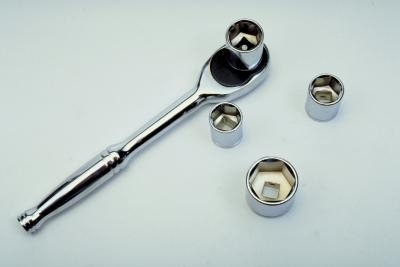
Camshaft seals, often just called "cam seals," fit around a vehicle's camshaft and prevent oil from leaking onto the engine. Leaking oil in your engine is expensive, dangerous and very smelly. The smell of burning oil on an engine should be an immediate sign that you need to change the cam seal. Changing the cam seals requires just a few special tools.
A torque wrench is important when replacing cam seals because it helps measure the amount of force or torque that is applied to bolts. Stripping bolts can destroy them and make them nearly impossible to remove. Using a torque wrench preserves bolts by preventing them from being tightened too much or too little. In changing the cam seals, the torque wrench will be used to replace the bolts on the camshaft plate and valve cover.
A ratchet -- or socket wrench -- is also needed to change the cam seals. A socket wrench is shaped much like a standard wrench except that the tip -- the socket -- can be changed to fit any size nut or bolt. You will use the socket wrench to remove all the bolts involved in the cam seal process. The main difference between the socket wrench and the torque wrench is that the torque wrench is more precise. You will use the socket wrench to remove bolts because very little precision is needed to remove the bolts.
In most mid-size vehicles, a 10 mm or 12 mm socket is the right fit for the socket wrench. Of course, it will depend on the size of the vehicle. In general, the larger the vehicle, the larger the bolts, which means the larger the socket you will need. An 18-wheeler will obviously require a larger size socket than a Geo Metro. The sockets will connect on the top of the socket wrench. Often, the connection is magnetic, which helps prevents slipping and guarantees a tight fit.
While they are not tools, you will need to have camshaft seals as well as a can of liquid sealant. The replacement sealants will be used to replace the old ones, and the liquid sealant will be used with the seals to help them stay in place as well as provide extra sealing.